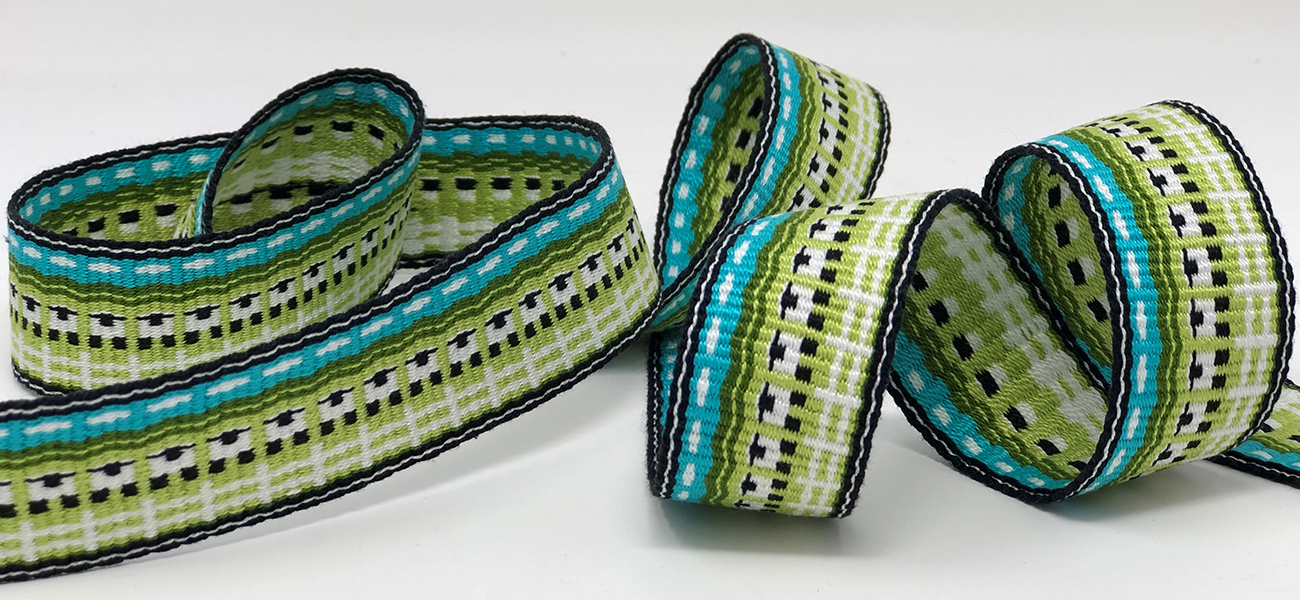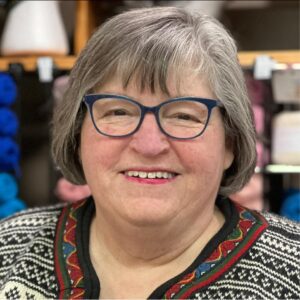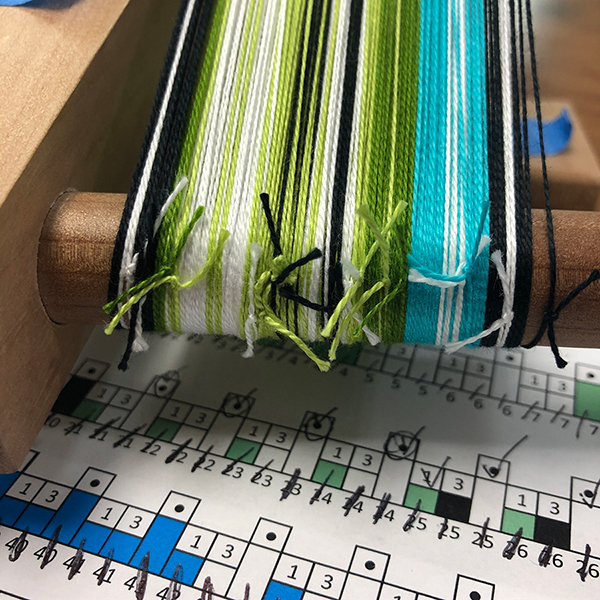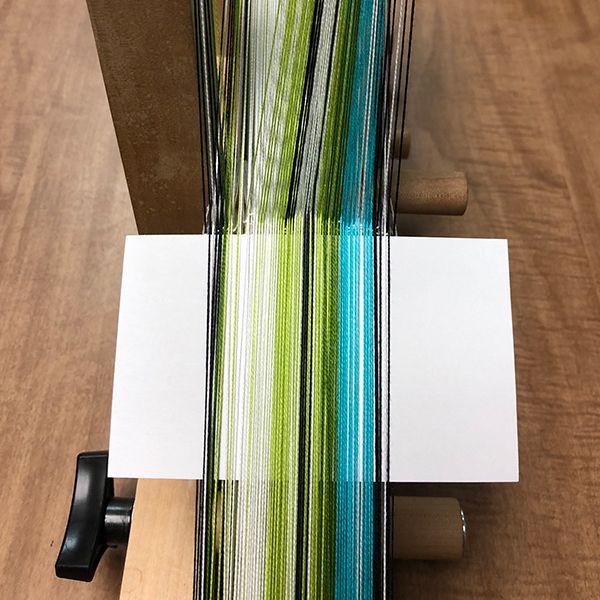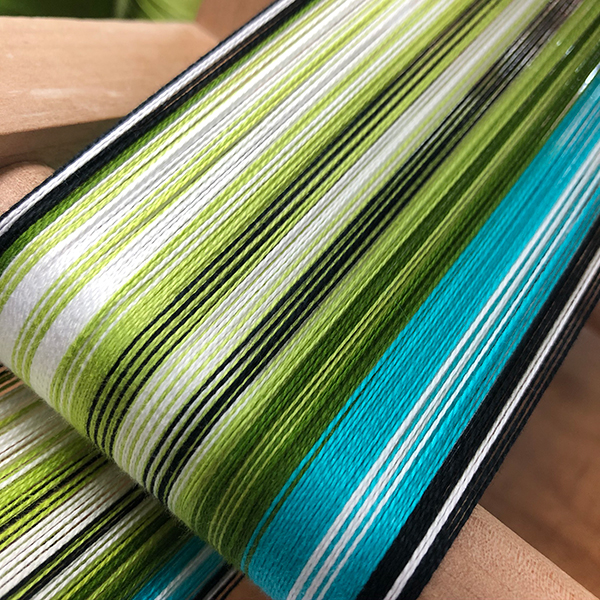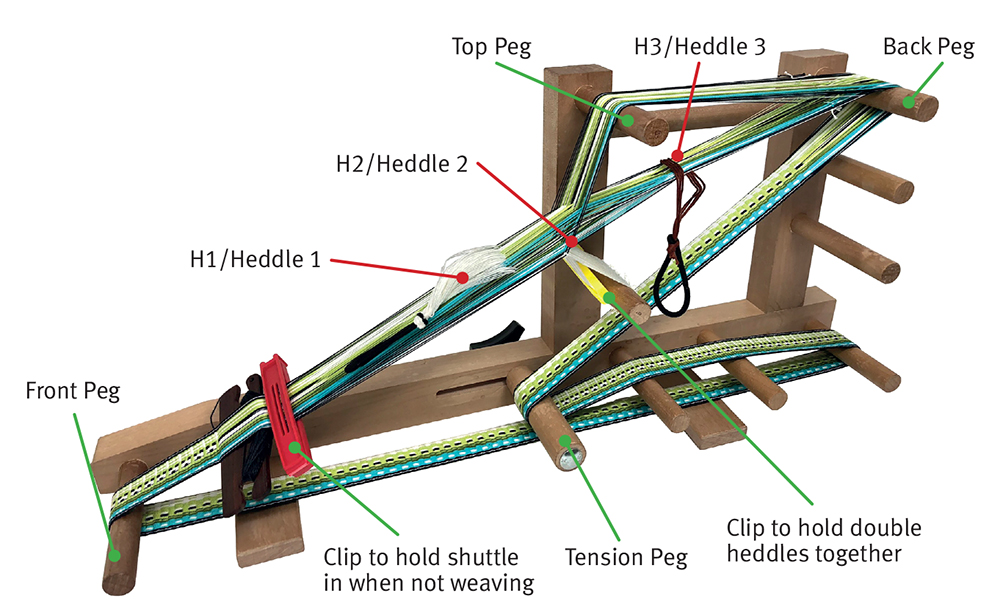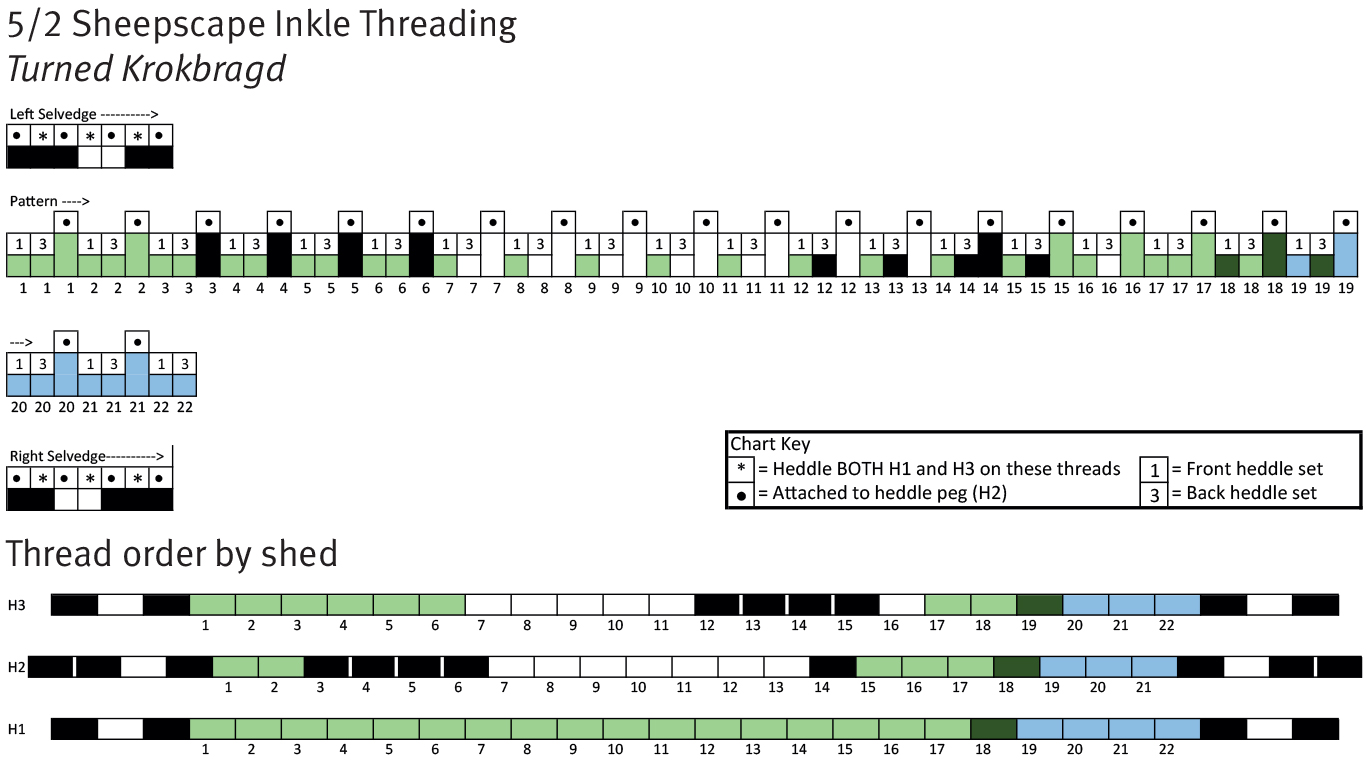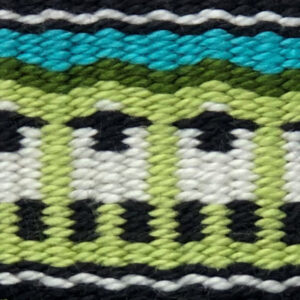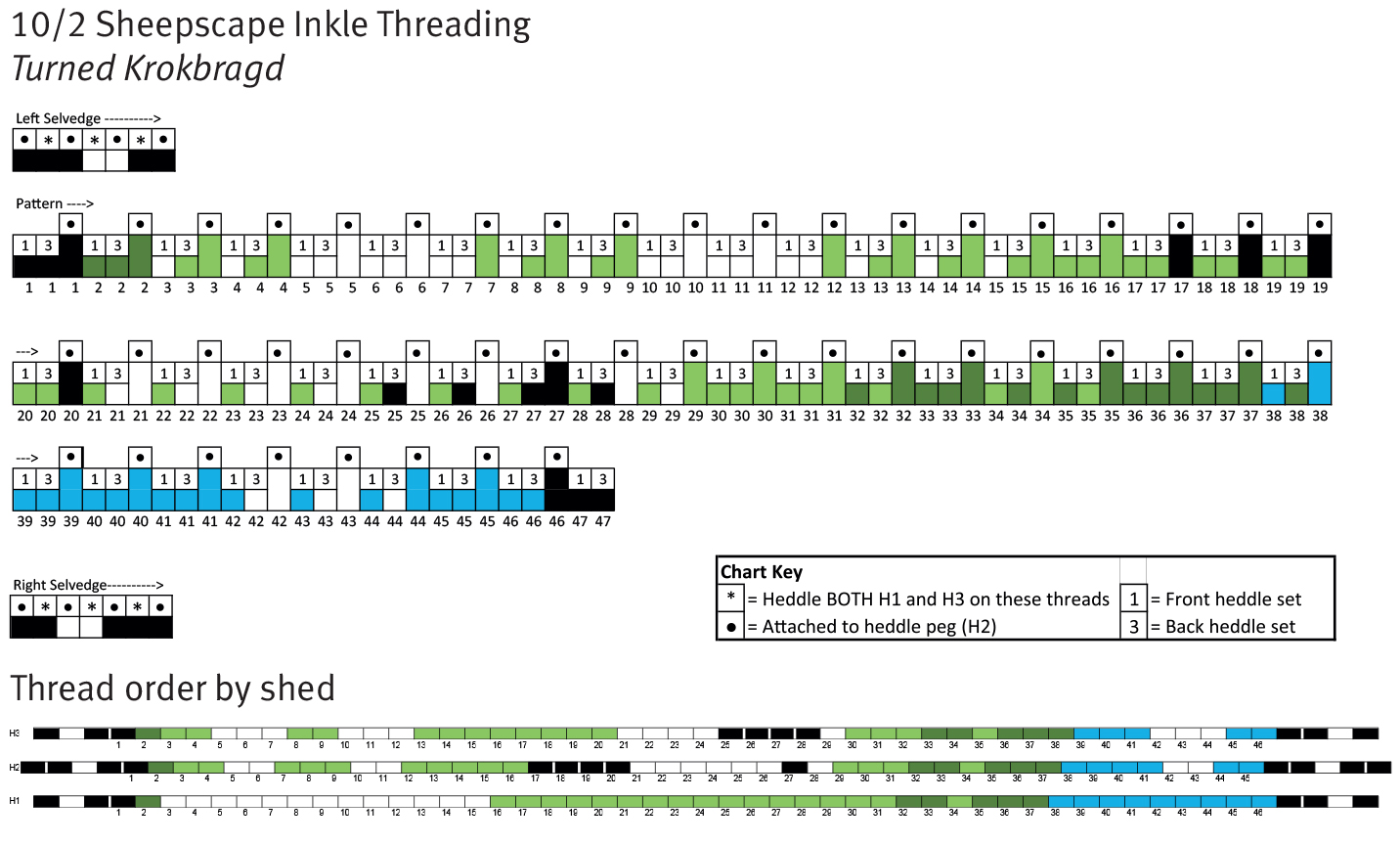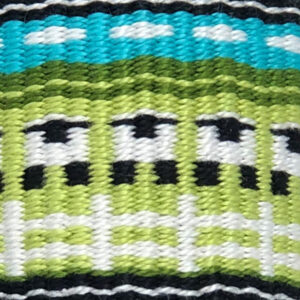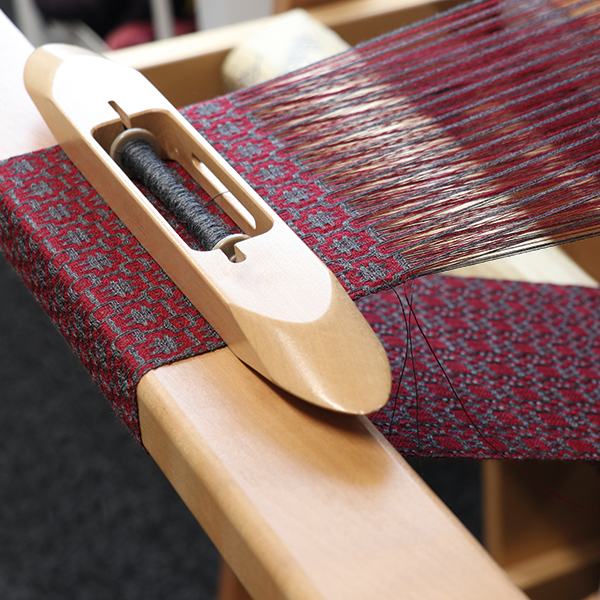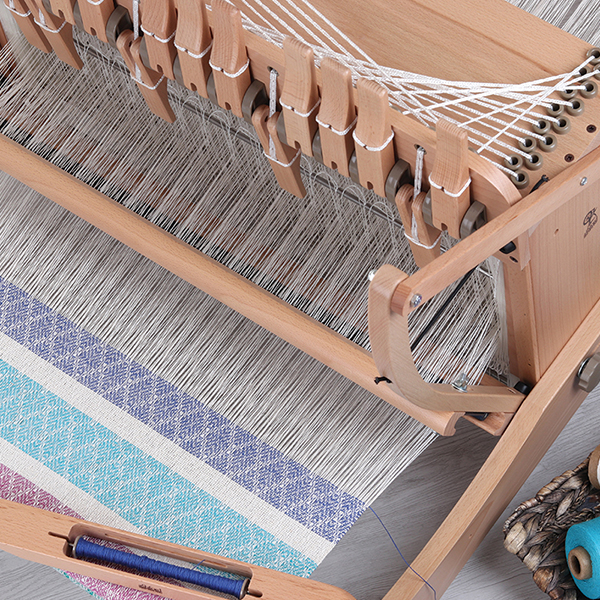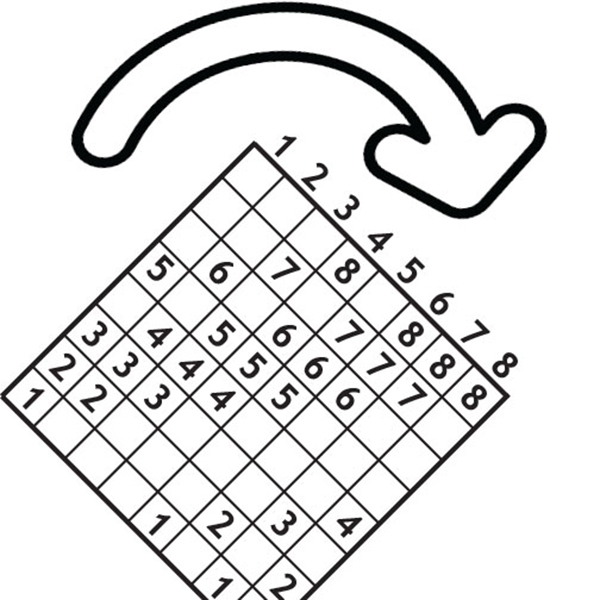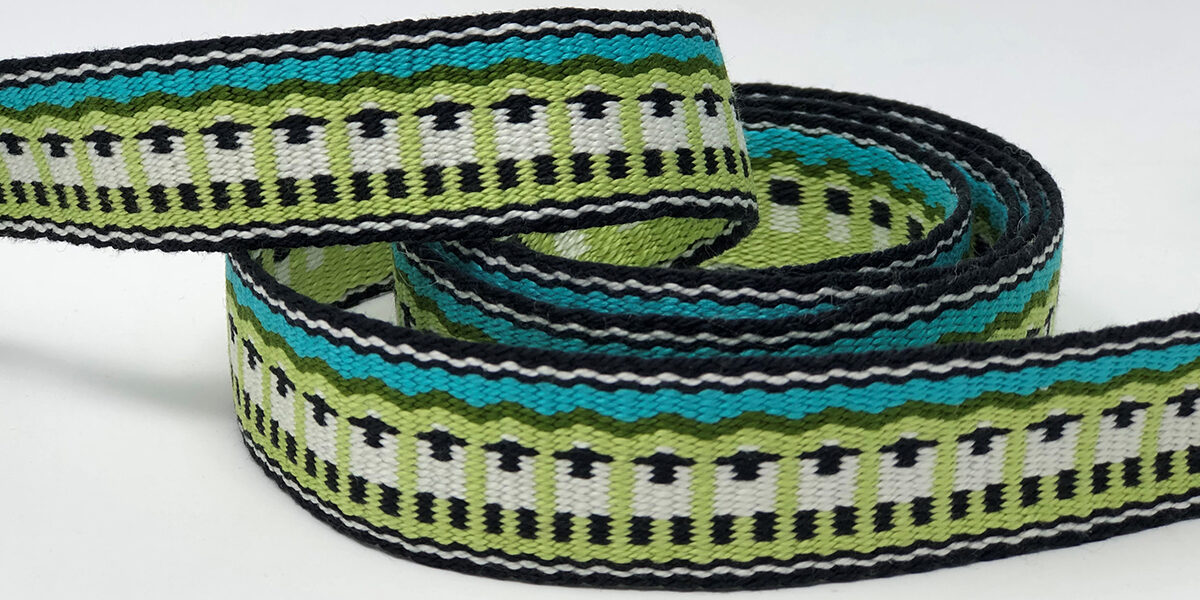
Inkling Around: Turned Krokbragd
Joan Sheridan created these beautiful sheepscapes in turned krokbragd woven on an Inkle loom. The first band (in the 5/2 cotton) featured in The Wheel magazine, Issue 32.
Joan has been an Ashford dealer for 20 years. She thinks of herself as a fibre explorer. In her spare time when she’s not teaching, weaving, knitting, spinning or running her shop, she can be found volunteering as a textile conservator at theHenryFord.org. Why don’t you give Joan’s turned krokbragd a go today!
Happy weaving!

Kate
Inkling Around: Turned Krokbragd
By Joan Sheridan.
I enjoy creating landscapes using the krokbragd weave structure. These designs are my interpretation of driving across the South Island of New Zealand. The sheep, distant mountains, and blue, blue sky remind me of the area around Ashburton. The selvedges are the corporate colours of Ashford.
Krokbragd is a traditional Scandinavian weaving technique that produces a twill-based, weft-faced fabric when woven on a multi-shaft loom. Turned krokbragd on the inkle loom produces a warp-faced fabric. To create a krokbragd-style band, the pattern must be “turned” so that the warp does the colour work. A turned krokbragd band has two distinct sides: one that shows the design and appears to be plain weave and the other with long floats over three weft threads. What you cannot see is a third layer that gives the fabric integrity and is hidden by the long floats on the back side. A krokbragd band has a plain weave selvedge to limit curling.
Krokbragd on the inkle is entirely loom-controlled. To create the weave structure, three heddle sets are needed: Heddle 1 (H1) is situated closest to the weaver and in front of the traditional heddles, Heddle 2 (H2) is the traditional heddle set that controls the thread that goes over the top peg, and Heddle 3 (H3) is behind H2. Once these are in place, starting with the shuttle on the right, lift H1 and pass the shuttle, down for H2, up for H3, and end the sequence with down on H2. This sequence of four picks produces the pattern. Notice that H2 is woven every other pick.
The first step to warping the loom is very similar to warping for plain weave. Both selvedges always begin and end with a heddled thread. The krokbragd portion of the band begins with two unheddled threads followed by one heddled and two unheddled threads repeated across the width of the band to the opposite selvedge.
The most expedient way to dress the loom is to use a discontinuous warp, in other words, you do not break the yarn and tie to the next colour with each colour change. Simply secure the end of the new colour and begin warping, changing colours as dictated by the pattern. End the thread by tying it to itself – beginning to end – either a) when that colour is no longer needed or b) when you have progressed about 10 – 15 warp threads. A helpful tool for holding ends as you warp is painter’s tape. Use a square knot to secure threads and keep tension even across the warp.
The next step is to isolate all the threads controlled by H3. Situate the loom in the weaving position perpendicular to your body. Push down H2 threads and wrap a card or piece of paper around them in front of the H2 heddle for visual contrast. Slide the paper up the warp until it meets the H2 heddles. Working from left to right following the chart, select the colours for H3. Make sure that the threads are lifted straight up and don’t cross a H2 thread. As you select each thread, hold it above the warp using your left little finger. If there are two threads of the same colour between heddled threads, it doesn’t matter which one you select. Once all the threads are collected, carefully fasten a wide clip to the H3 threads about 15cm (6ins) in front of H2. Compare selected threads to the chart for accuracy in colour and order. Raise the H3 threads and reach behind H2 to hold them. Taking care to fasten only H3 threads, add a small clip to these threads behind H2 and leave the original clip in place at the front of the loom.
Almost there! To isolate H1 threads, begin by selecting the unheddled selvedge threads. Note that these threads are heddled in both H1 and H3. This is correct and necessary to achieve the plain weave selvedge. Working in the krokbragd area of the warp, pick up the H1 thread so that it is to the left of the thread you picked up for H3. It helps to spread the threads going over the top peg to identify which thread is the correct one of the pair between the heddled threads. When all threads have been selected, remove the H3 clip at the front of the loom and place a wide clip on the selected H1 threads. Make sure the threads are in order coming from between the H2 heddles. One cannot cross another. Confirm that colour order is correct. Remove the paper.
Heddling the H3 threads is simple. Use a sturdy cord about 20cm (8ins) long to encompass the threads in the clip. Fold the cord in half around all of the H3 threads and tie an overhand knot about 2.5cm (1in) from the ends. Using a lark’s head knot, attach a hair elastic at the knot to use as a handle. Remove clip.
H1 is a continuous heddle that is made from crochet cotton. Make a loop using an overhand knot near the tail of the crochet cotton that is big enough to put your finger through. Pull the knot under the H1 threads and place the loop on your little finger. Pick up a loop of the crochet cotton between each H1 thread using a pointed tool and place on your little finger. Keep the loops the same length. When all threads have been heddled, cut the crochet cotton leaving a 30cm (12ins) tail. Attach the hair elastic to the loops as for H3 and use half-hitches to secure the tail around all the heddles directly beneath the elastic.
Using spacers, make the first four picks – H1, H2, H3, H2. Fix any mistakes. With the belt shuttle, start at the right and follow this same sequence using the weft yarn.
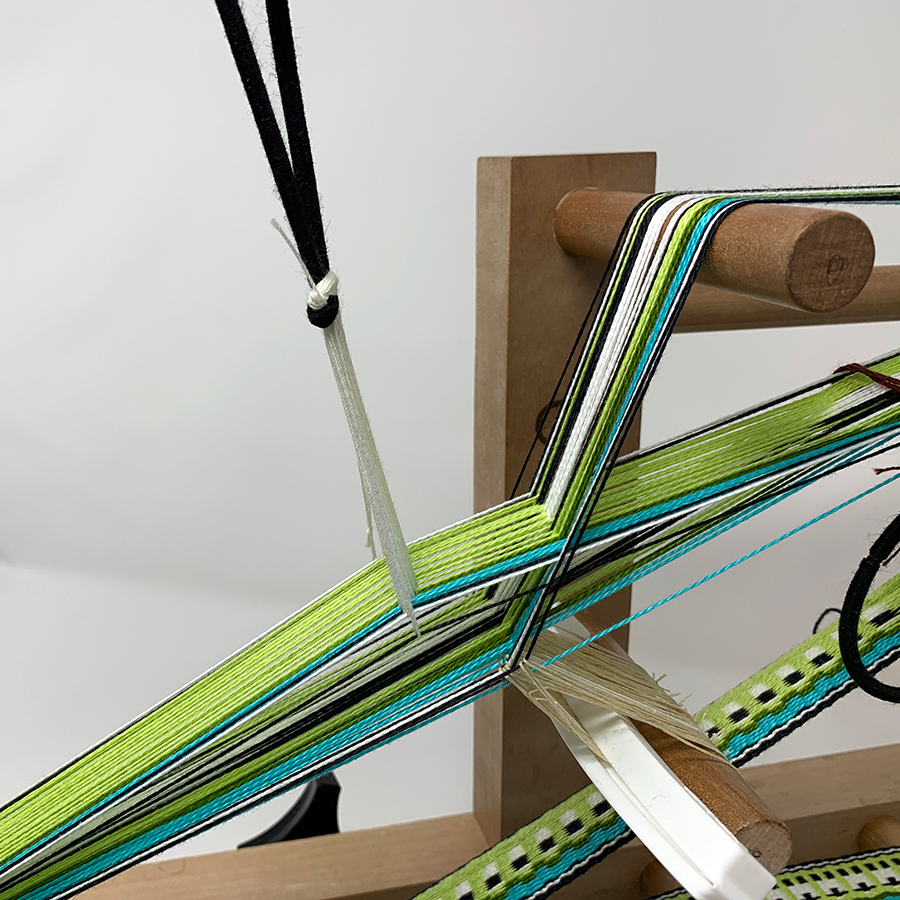
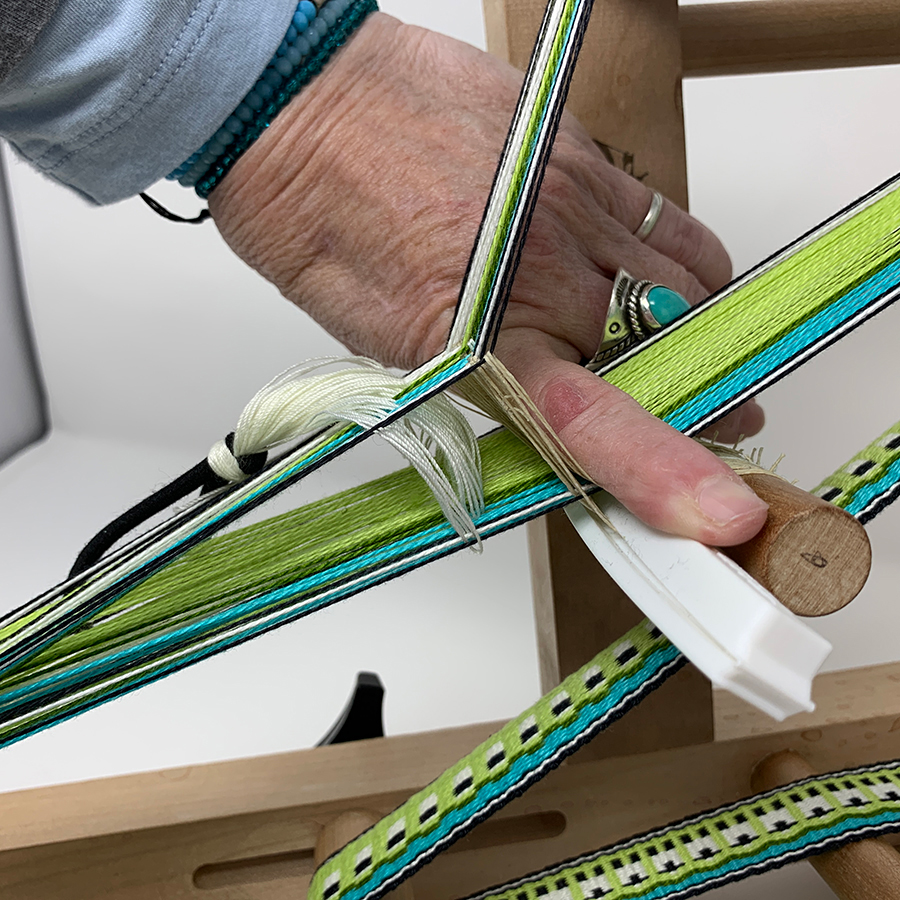
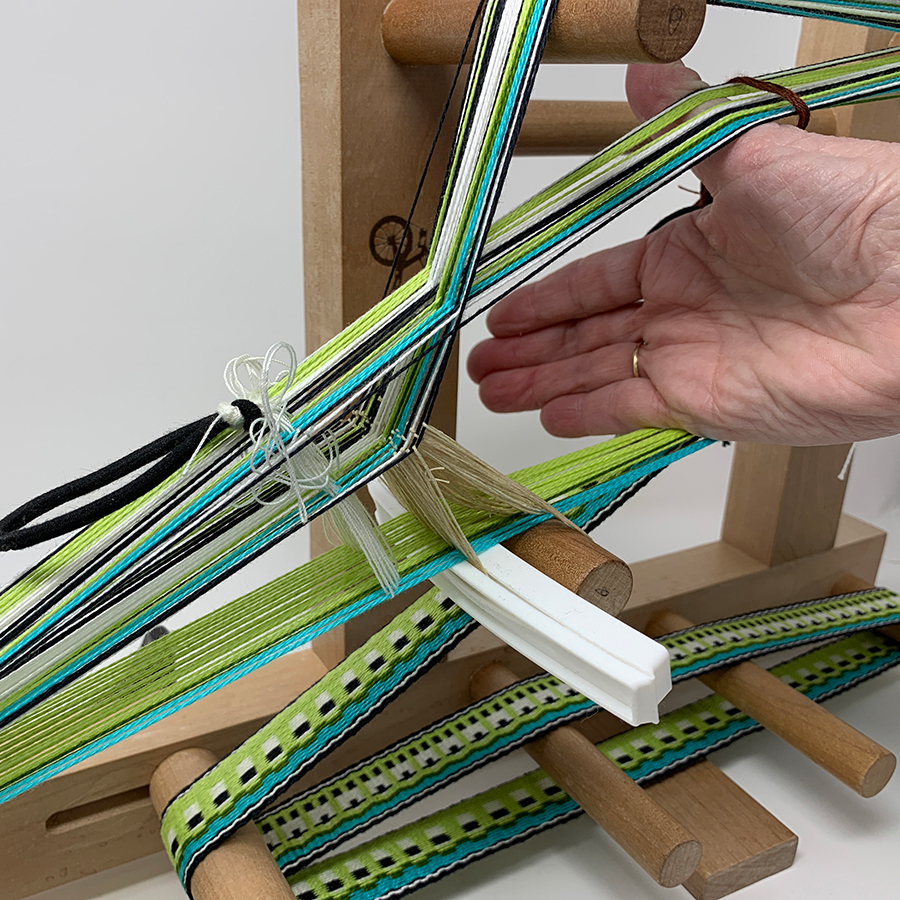
Hints:
• When weaving wider bands, a finer heddle thread is helpful.
• Advance the warp frequently, every 5-8cm (2-3ins), for better selvedges.
• Remember to adjust the tension knob to almost fully extended before beginning to warp.
• Make a copy of the pattern so that you can mark your progress as you wind the warp.
• If a thread “catches” in a shed, check to see if it is crossing over an adjacent thread.
• Observation: H1 shed creates the dividing space between sheep, H2 shed creates the sheep legs and H3 shed creates the sheep head.
You will need:
Loom: Ashford Inkle
Warp yarn: Ashford Mercerised Cotton 5/2 (100% cotton, 848m/927yds, 200gm) or
10/2 (100% cotton, 1696m/1854yds, 200gm) #11 Black 38m (41½yds) 50m (54½yds), #01 Bleached White 34m (37yds) 88m (96yds), #44 Scuba Blue 20m (22yds) 40m (44yds), #52 Green Glow 60m (65½yds) 94m (103yds), #22 Cedar Green
6m (6½yds) 36m (39yds)
Weft yarn: Ashford Mercerised Cotton 5/2 used for both bands 30m (33yds) each
Other: Card or plain white paper to use as a contrast when selecting threads for heddling, painter’s tape, pre-made double heddles (5/2 band = 29 heddles, 10/2 band = 54 heddles), scissors, pencil, thread/yarn, bag clips – 2 or 3 each of small and large (IKEA is a good source), heavy smooth scrap yarn for H3, small ball #20 crochet cotton to make continuous heddle, 2 hair elastics, pointed tool (a small knitting needle, small crochet hook, dental pick, or toothpick), warp separators (small craft sticks)
Here’s how:
Total warp ends: 5/2 band 79 ends, 10/2 band 154 ends
Warp length: 2m (78ins)
Ashford 10/2 Mercerised cotton
Use a finer cotton to add a fence, clouds and background details to your inkle band.
